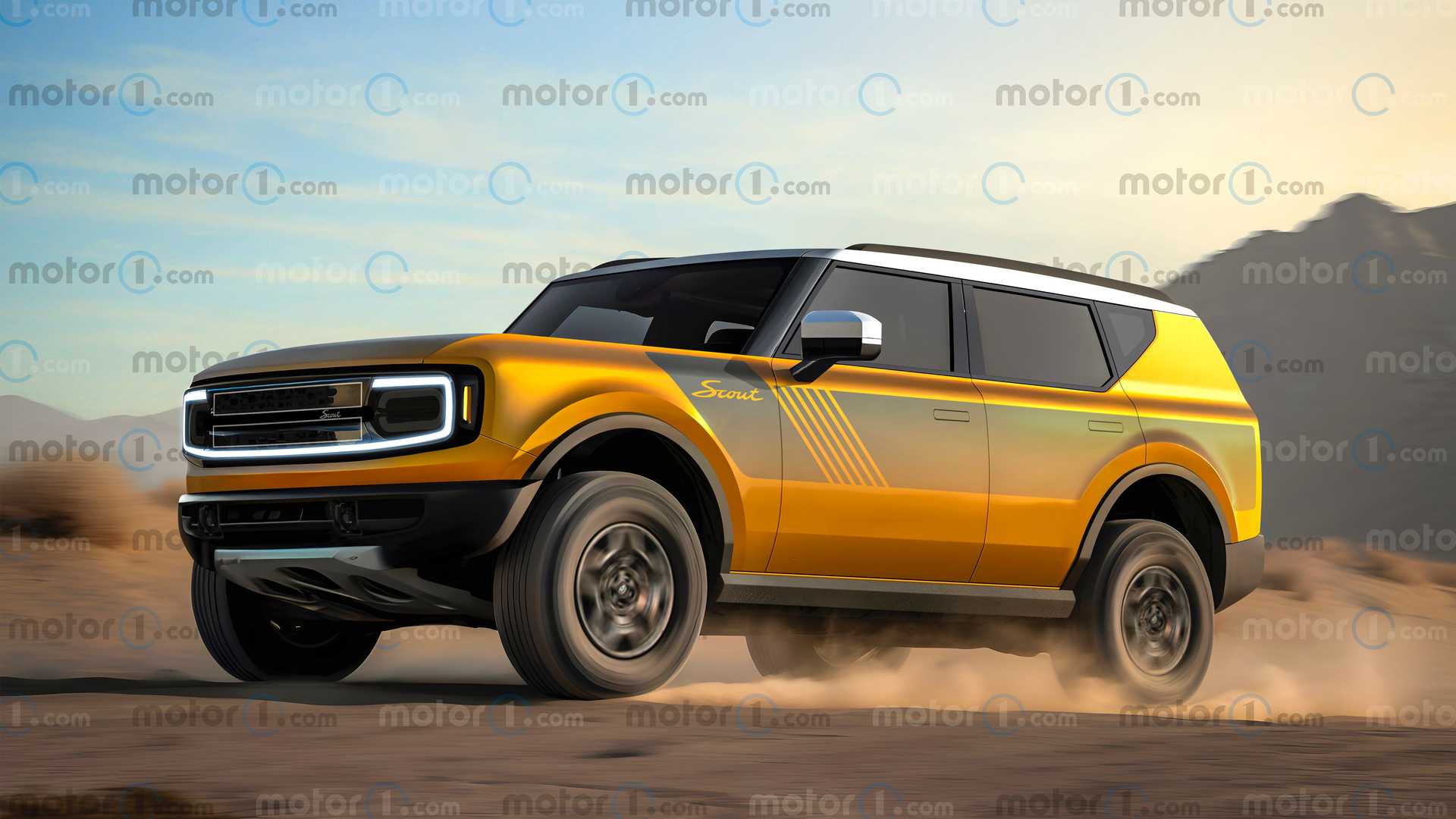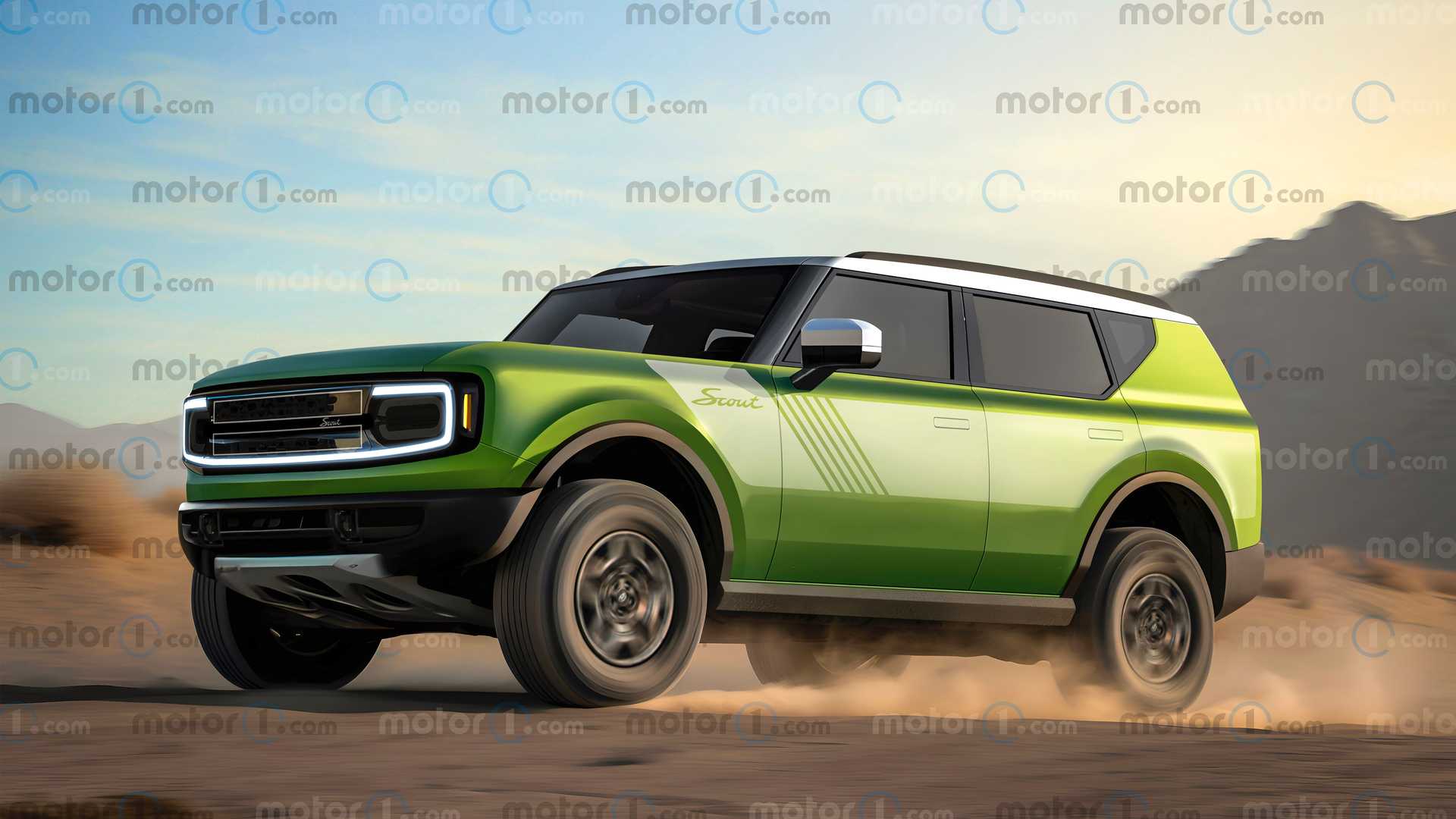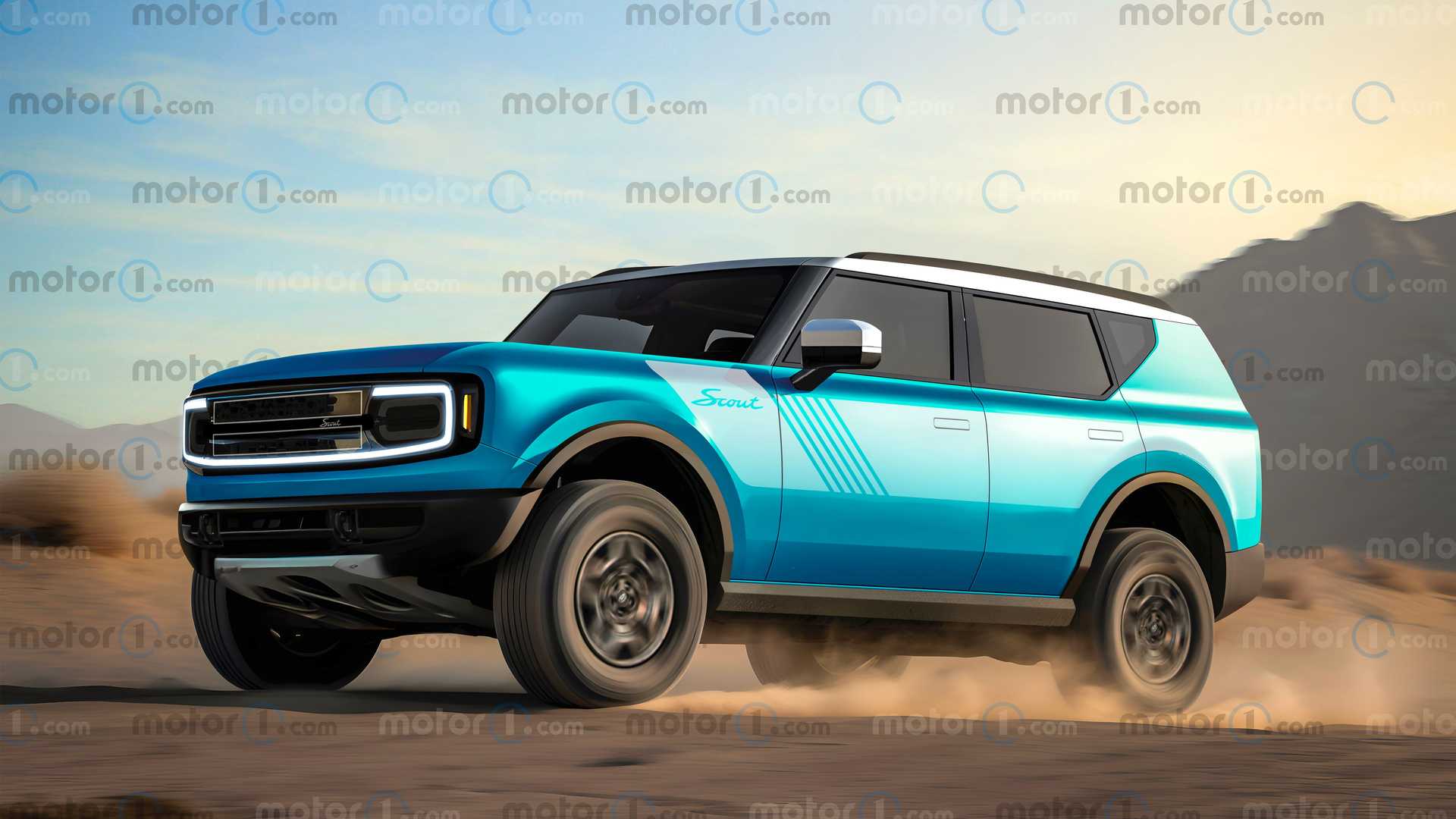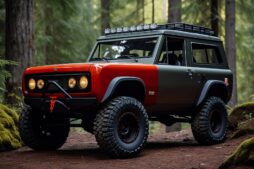Screen-Free EV: Your Life, Your Way
When Scout Motors releases their initial line of electric trucks and SUVs in 2026, their goal will be to capture the attention of the American market in a manner that Volkswagen, their parent company, has not been able to achieve. What’s even more uncommon in the fast-growing electric industry is that Scout Motors plans to use tangible buttons instead of touch screens.
During the brand’s factory groundbreaking ceremony in Blythewood, South Carolina today, Scout’s president and CEO, Scott Keogh, and chief designer, Chris Benjamin, both reaffirmed their commitment to reviving a storied American SUV nameplate. As Keogh stated, “With our efforts to bring back this iconic SUV, ‘screen fatigue’ will not be a problem.”
“Having a manual is crucial,” emphasized Benjamin during today’s ceremony, promptly clarifying that he was not referring to the traditional sense of a manual, but rather the tangible aspect of the trucks. “We aim to ensure that the things you utilize on a daily basis are not hidden within the screen. Simplicity, efficiency, and a hands-on experience are all extremely significant.”
According to the speaker, “Scout was a machine that consistently operated without fail. Our goal is to ensure that the replacement machine also operates flawlessly.”
When the Volkswagen Group set out to design an electric SUV tailored specifically for the American market, they were faced with a daunting task. How could they create an iconic and rugged vehicle that would appeal to American consumers? Fortunately, the answer came in the form of the Scout. Originally produced by International Harvester from 1960 to 1980, the Scout SUVs and trucks were pioneers in their field, preceding the likes of the Ford Bronco, Land Rover Defender, and Mercedes G-Class by several years. Though the name was inherited by the Volkswagen Group through a truck acquisition a few years ago, they made the bold decision to revive it as a modern vehicle that pays homage to its retro roots while incorporating cutting-edge technology: an all-electric off-roader.



According to Benjamin, a former design leader at Stellantis, he does not agree with the label of “retro” for the new Scout vehicles. Although the final designs have not been revealed to the public and the specifications are still unknown, he believes that they are more “heritage-inspired” rather than simply a nostalgic throwback. “That would be too easy,” he stated. “While there may be some individuals who insist on an exact replica of the old model, there are also many who are not familiar with the history and legacy of Scout. They are looking for something that is iconic, modern, and cool. It’s all about finding a balance between these elements.”
Creating controls for a contemporary electric vehicle required achieving a different form of equilibrium. Managing the majority of a car’s functions through a touch screen can be daunting, especially while driving at 70 mph on the highway. Attempting to do so while off-roading may seem nearly insurmountable and could potentially result in one’s previous meal being dispersed all over the screen. Although information regarding the upcoming Scout interiors is still tightly held, Benjamin provided some insight into what we can anticipate.
“We want to ensure that the things you use on a daily basis are easily accessible and not hidden away on the screen,” he stated. “Our goal is to create a visually appealing user experience on the screen, but it’s important to remember that UX goes beyond just what is seen on the screen.”
By doing this, Scout will defy a pattern that is becoming prevalent in the evolution of automobiles. In addition to cutting costs by eliminating buttons, car manufacturers have grand strategies for subscription-based software services, entertainment options like in-car gaming and streaming, and various activities to pass the time while waiting at a charging station, or for the inevitable day when cars become self-driving. Furthermore, modern cars are equipped with such a multitude of advanced features that it has become almost impractical to incorporate physical buttons for each one, resulting in the trend of larger and more numerous screens and a growing dependence on voice commands.
However, this has sparked various safety apprehensions, not to mention the aggravating user interfaces. A few car manufacturers have acknowledged that they may have gone overboard and have begun incorporating more conventional buttons and physical controls. This even includes Volkswagen, the parent company of Scout, which was compelled to reintroduce volume knobs in its vehicles due to negative feedback from owners. As a result, the company is also re-evaluating its approach to implementing buttons. According to Benjamin, “We will stick to what we know is effective.”
According to Benjamin, the sketches that have been revealed may not accurately represent the final design. He expressed this by rolling his eyes and stating that the final product will be more innovative than people expect. “It won’t resemble a Bronco,” he clarified.






This is a great resource. Thanks for putting it together!